The Great Lakes, Earth’s largest natural freshwater lakes, are popular summertime destinations for families from all across the world. Home to cities like Chicago, Toronto, Milwaukee, Cleveland, and Buffalo, the Great Lakes region is home to over 85 million people, and accounts for over $4.5 trillion in economic activity. Major cities like Chicago and Toronto are global cities, attracting businesses and tourists alike from all around the globe to their financial and cultural centers.
As the bone-chilling cold lets up from the wintertime, the pleasant and often warm summers in the Great Lakes region draw in millions of tourists. But with these pleasant shores lie the potential for accidents and even death.
In this article, our personal injury lawyers in Chicago will be exploring each of the 5 Great Lakes, and how many incidents happen each year, and try to expose some of the patterns surrounding them.
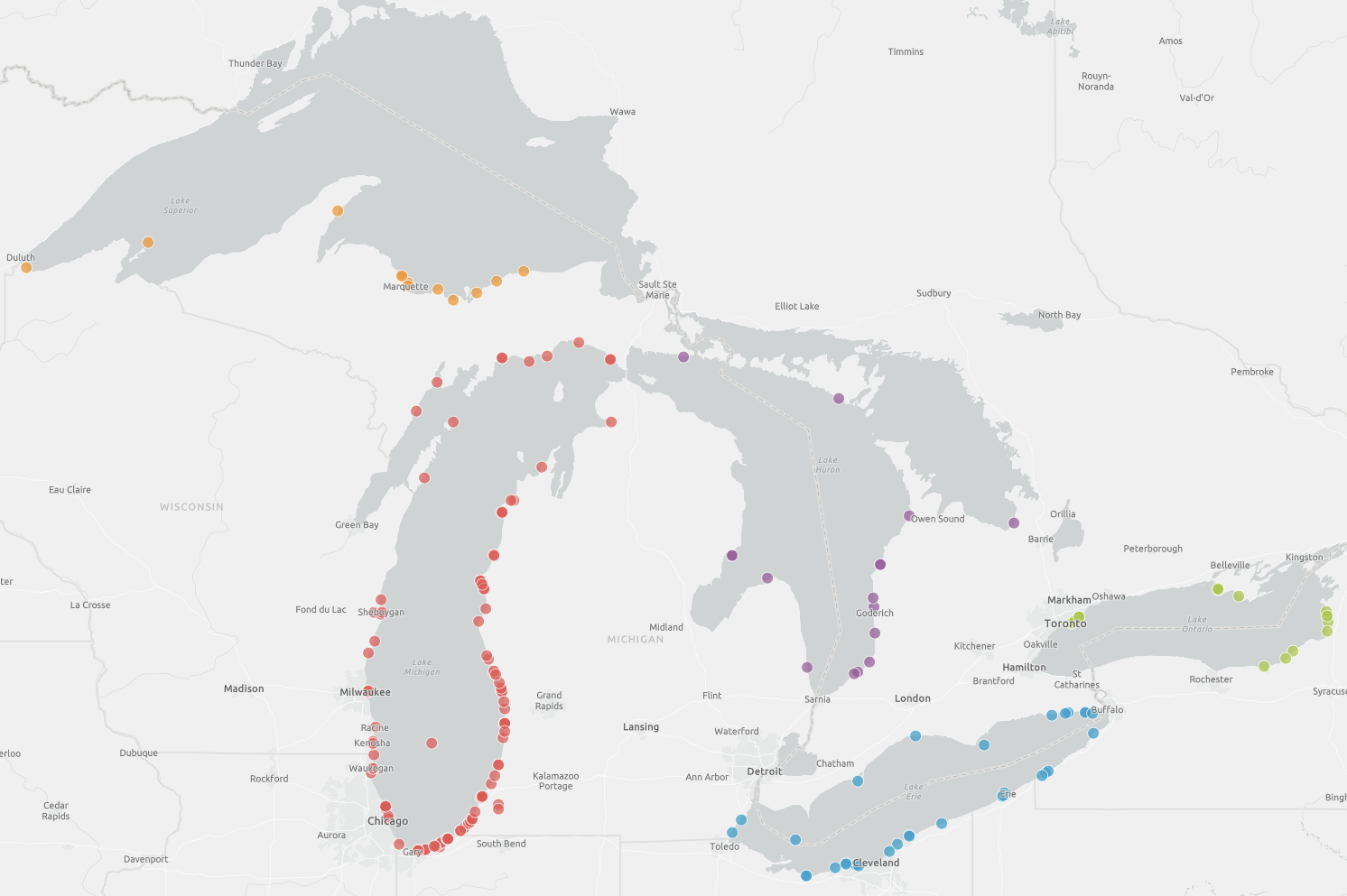
The most dangerous year at the Great Lakes was 2011 with a combined total of 83 incidents across all 5 Great Lakes. 2020 was the second most dangerous, surprisingly, with 73 incidents. Even with beach closures and the pandemic, 2020 proved to be disastrous year on the Great Lakes.
During the study, there was a grand total of 703 incidents spanning the 18-year time period this study was done over. The total for the years is as follows:
| Year | Rescues | Fatalities |
|---|---|---|
| 2002 | 3 | 6 |
| 2003 | 7 | 13 |
| 2004 | 7 | 5 |
| 2005 | 20 | 10 |
| 2006 | 7 | 7 |
| 2007 | 16 | 12 |
| 2008 | 30 | 11 |
| 2009 | 45 | 5 |
| 2010 | 26 | 32 |
| 2011 | 68 | 15 |
| 2012 | 52 | 15 |
| 2013 | 14 | 7 |
| 2014 | 12 | 6 |
| 2015 | 12 | 6 |
| 2016 | 34 | 16 |
| 2017 | 26 | 7 |
| 2018 | 27 | 12 |
| 2019 | 23 | 10 |
| 2020 | 51 | 28 |
| Total | 480 | 223 |
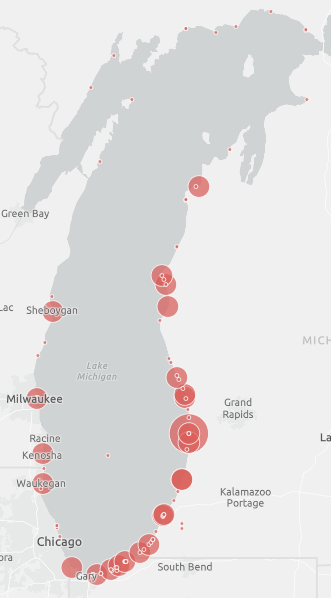
Lake Michigan, like the other Great Lakes, can pose various dangers to boaters, swimmers, and others who interact with it. Here are some reasons why Lake Michigan can be considered dangerous:
While Lake Michigan offers many recreational opportunities and stunning natural beauty, visitors should be aware of the potential dangers and take appropriate precautions to ensure their safety. This includes staying informed about weather conditions, wearing life jackets when boating, swimming in designated areas with lifeguards, and being cautious of underwater hazards and currents.
Lake Michigan is one of the five Great Lakes of North America, located entirely within the United States. The lake is the third largest of the Great Lakes by surface area and the sixth largest freshwater lake in the world. The region has a rich history of human habitation, with various Native American tribes living in the area for thousands of years. The first European to explore the area was French explorer Jean Nicolet in 1634. The lake played an important role in the fur trade and was also used for transportation and shipping. During the 20th century, the lake’s economy shifted towards manufacturing and industry, with cities such as Chicago becoming major hubs of commerce. Today, Lake Michigan is a popular tourist destination known for its sandy beaches, clear waters, and recreational opportunities such as fishing, boating, and swimming. The lake is also an important source of drinking water for millions of people and supports a diverse ecosystem with over 150 species of fish.
Last year was considered the most deadly year in Lake Michigan. While this article does not focus on all fatalities, let’s dive into the rescues and fatalities that happened in the water from 2002 to 2020.
The most common type of rescue came from structural currents, which the Michigan Sea Grant describes as, “Swimming near break wall, pier or similar structure.” This means that swimming near these man-made structures can lead to serious incidents that require the help of the Coast Guard or Lifeguards to get out of.
The most common type of fatality came from classic rip currents. These typically come from swimming at a beach with sandbars, which are a common feature around Lake Michigan. Rip currents are a constant danger in any sufficiently large body of water. They form when fast-moving waves pull you out past the shoreline and into a deep body of water. Often times swimmers will try to fight the rip current and exhaust themselves, not remembering to swim parallel to the shore until they are out of its clutches.
Paying attention to the currents and being able to recognize the danger in the water is critical to staying safe. Just because the Great Lakes are lakes, that does not mean that they are not dangerous. Their massive size leads to the same tidal forces that the ocean experiences, and high waves, rip currents, and man-made structures can all add to the danger.
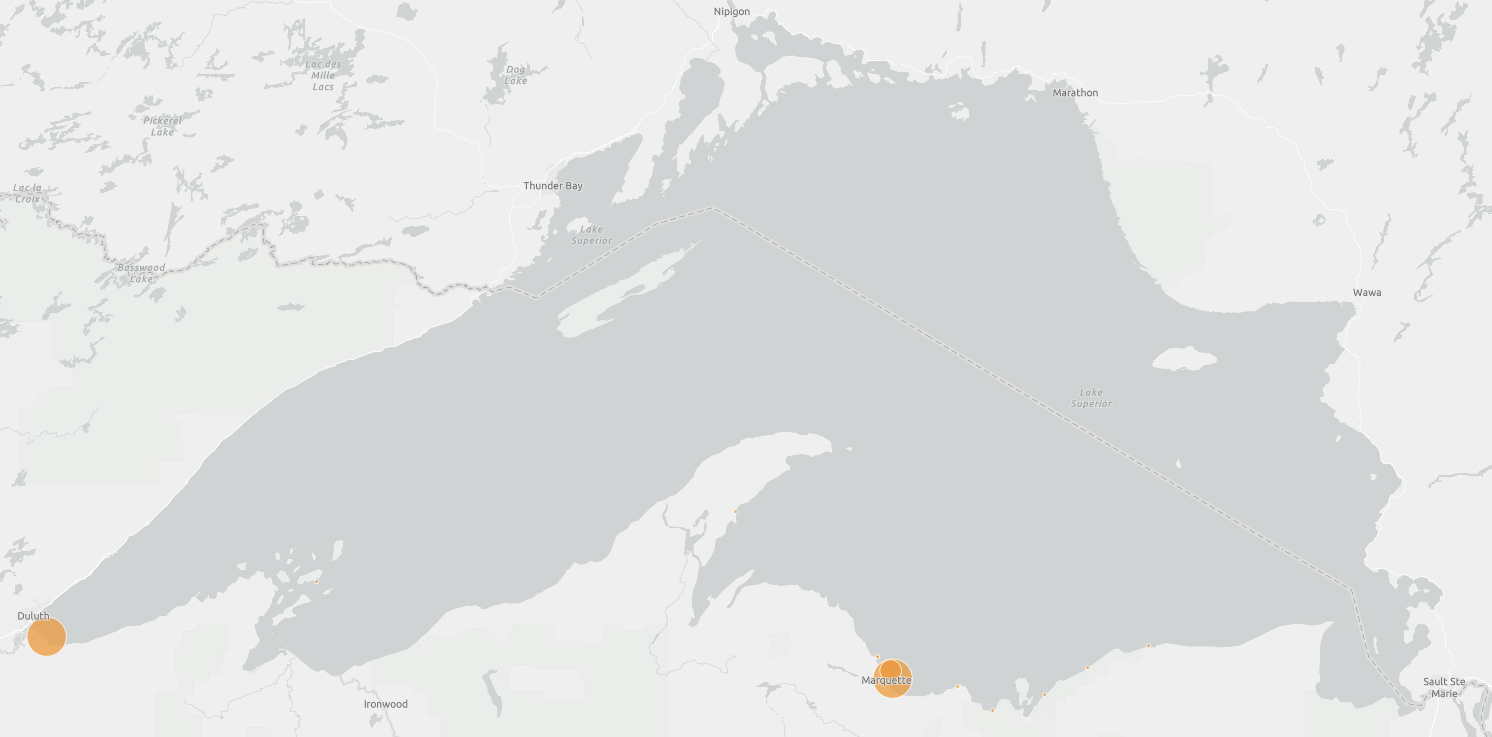
Lake Superior, the largest of the Great Lakes, is known for its beauty but also for its potential dangers. Here are some reasons why Lake Superior can be considered dangerous:
Overall, while Lake Superior offers breathtaking scenery and recreational opportunities, visitors should be aware of the potential dangers and take appropriate precautions to ensure their safety. This includes staying informed about weather conditions, wearing appropriate safety gear when boating or swimming, and being prepared for the challenges of navigating such a vast and sometimes unforgiving body of water.
Lake Superior is the largest of the Great Lakes of North America and the world’s largest freshwater lake by surface area. The lake is shared by Canada and the United States, with the Canadian province of Ontario to the north and the US states of Michigan, Minnesota, and Wisconsin to the south. The lake has a rich history dating back thousands of years, with the Ojibwe people being the first to inhabit the region. The first European to explore the area was French explorer Étienne Brûlé in the early 17th century. The lake has played an important role in the region’s economy, with the fur trade and mining being major industries. Today, Lake Superior is a popular tourist destination known for its scenic beauty, recreational opportunities, and abundant wildlife. The lake is also an important source of drinking water for millions of people.
Kayaking on this massive lake has proven to be deadly, claiming the lives of 6 kayakers from 2018 to 2021. But let’s take a closer look at the historical numbers to uncover what is really going on.
While significantly fewer incidents happen each year at Lake Superior, this is probably due to the less dense nature of its population. Bordering only mid-sized cities, Lake Superior does not draw in the crowds that Lake Michigan does, but still, people end up needing emergency services each year.
The most common type of rescue and fatality came from rip currents. The large nature of Lake Superior means that tidal action creates dangerous rip currents that can endanger the lives of swimmers, kayakers, and boaters alike. Rip currents accounted for 20 rescues and 5 fatalities, almost half of the total incidents came from rip currents alone.
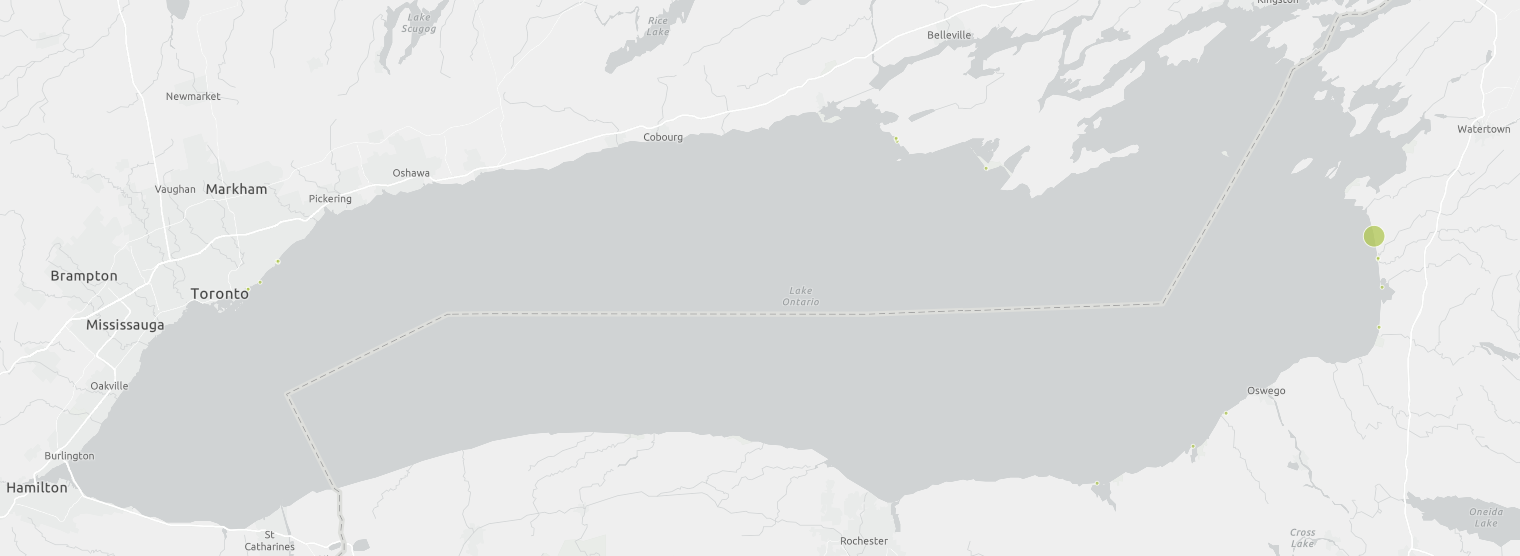
Lake Ontario is one of the five Great Lakes of North America, located on the border between the United States and Canada. The lake is the smallest of the Great Lakes by surface area but is still the 14th largest freshwater lake in the world. The region has been inhabited for thousands of years, with the Iroquois Confederacy being the dominant Native American group in the area. The first European to explore the area was French explorer Samuel de Champlain in 1615. The lake played an important role in the fur trade and was used for transportation and shipping. Today, Lake Ontario is a popular destination for recreational activities such as boating, fishing, and swimming. The lake is also an important source of drinking water for millions of people and supports a diverse ecosystem with over 50 species of fish.
A handful of recent deaths have brought Lake Ontario back into the spotlight. Let’s take a closer look at the data.
The smallest Great Lake does not have the smallest number of incidents per year. Let’s find out what is causing it.
Unlike other lakes, the plurality of rescues at Lake Ontario, ten to be exact, comes from outlet currents, described by the study as swimming near a river mouth or similar outlet. These currents often move fast and swiftly push a swimmer out deep into the lake. While not as powerful as a rip current, the large number of tributary rivers on Lake Ontario contributes to the rescue from outlet currents.
However, similarly to other lakes, the most deadly current is the rip current, accounting for 6 of the 19 deaths at Lake Ontario, which means that knowing the signs and strategies to escape rip currents is key when enjoying time at the lake.
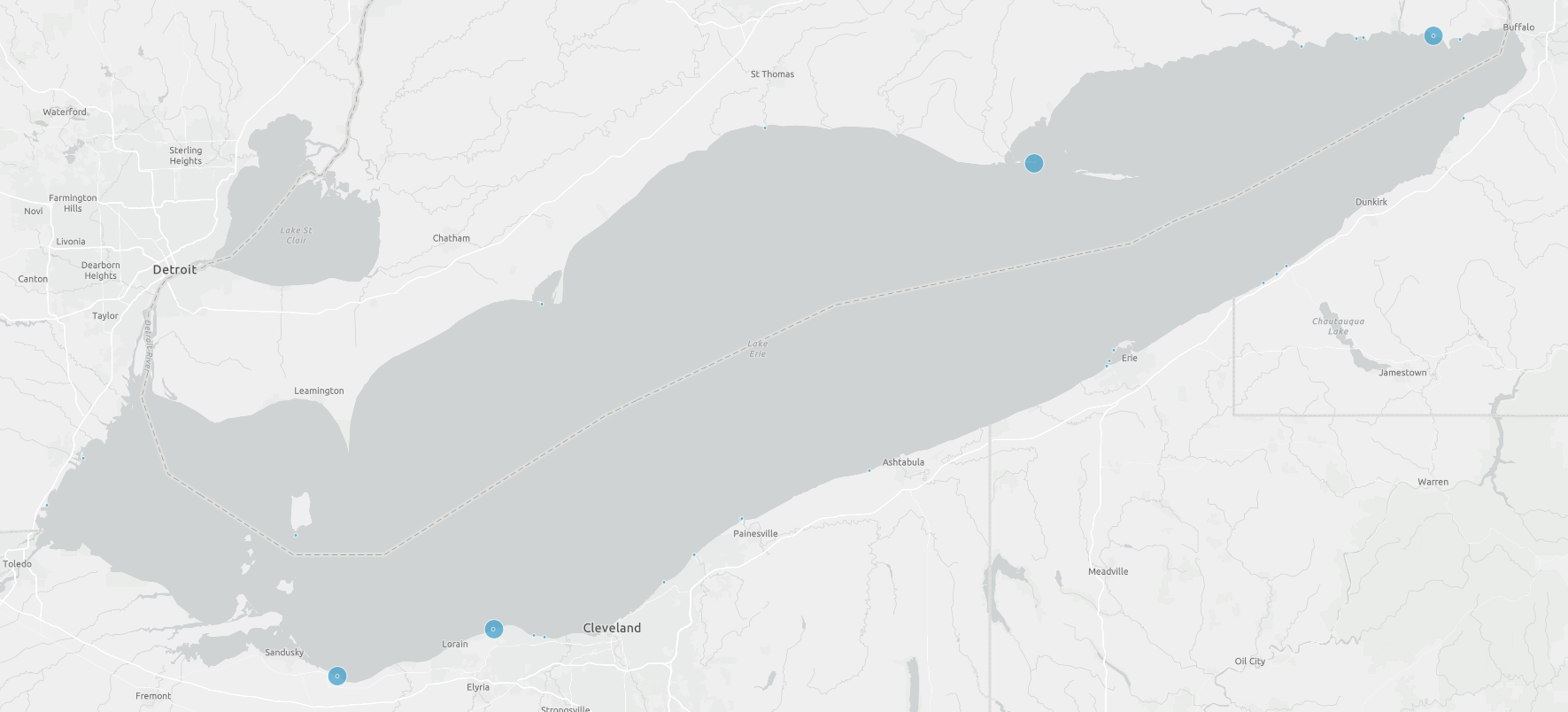
Lake Erie can be considered dangerous for several reasons:
Weather Conditions: Lake Erie is known for its rapidly changing weather conditions, especially during the fall and winter months. Sudden storms can arise, bringing strong winds, high waves, and even waterspouts. These conditions can pose significant hazards to boaters and swimmers.
Shallow Depths: Despite being one of the Great Lakes, Lake Erie is the shallowest, with an average depth of around 62 feet (19 meters). This shallowness can lead to the formation of large waves, especially during storms, which can be hazardous for small boats.
Algal Blooms: Lake Erie is prone to algal blooms, particularly in its western basin. These blooms are often caused by excessive nutrient runoff from agriculture and urban areas, leading to the proliferation of harmful cyanobacteria. These blooms can produce toxins harmful to humans and animals, impacting water quality and posing health risks.
Cold Water Temperatures: Even during the warmer months, Lake Erie’s water temperatures can remain relatively cool. Cold water can pose a risk of hypothermia for swimmers and boaters who are not adequately prepared.
Underwater Hazards: Lake Erie has its share of underwater hazards, including submerged rocks, reefs, and old shipwrecks. These hazards can be difficult to spot and pose risks to boaters navigating the lake.
Rip Currents: While not as common as in oceans, Lake Erie can experience rip currents, especially during periods of strong winds. These currents can pull swimmers away from the shore, making it challenging to return to safety.
Overall, while Lake Erie offers many recreational opportunities, visitors should be aware of the potential dangers and take appropriate precautions to ensure their safety. This includes staying informed about weather conditions, wearing life jackets when boating, avoiding swimming in areas affected by algal blooms, and being cautious of underwater hazards.
Lake Erie is one of the five Great Lakes of North America and is located on the border between the United States and Canada. The lake is the fourth largest of the Great Lakes and the 11th largest freshwater lake in the world. The region has a rich history, with the Erie people being the first known inhabitants. The first European to explore the area was French explorer René-Robert Cavelier, Sieur de La Salle in 1669. The lake played a significant role in the War of 1812 between the United States and Britain. The lake has been a major transportation route since the 19th century, and the development of the steel industry in the region helped to establish the lake’s economy. Today, Lake Erie is a popular tourist destination for recreational activities such as boating, fishing, and bird watching.
While Lake Erie has a long and dated history with both the United States and Canada, let’s take a look at how dangerous Lake Erie really is.
Lake Erie has some major population centers surrounding its shores, meaning it draws in a decent number of tourists each year. Let’s see what is causing the danger lurking under this lake.
Like the other lakes, Lake Erie’s most dangerous currents lie with rip currents. Accounting for 20 rescues and 16 fatalities over the study period, it is critical to look out for rip currents while enjoying the beautiful sights of Lake Erie.
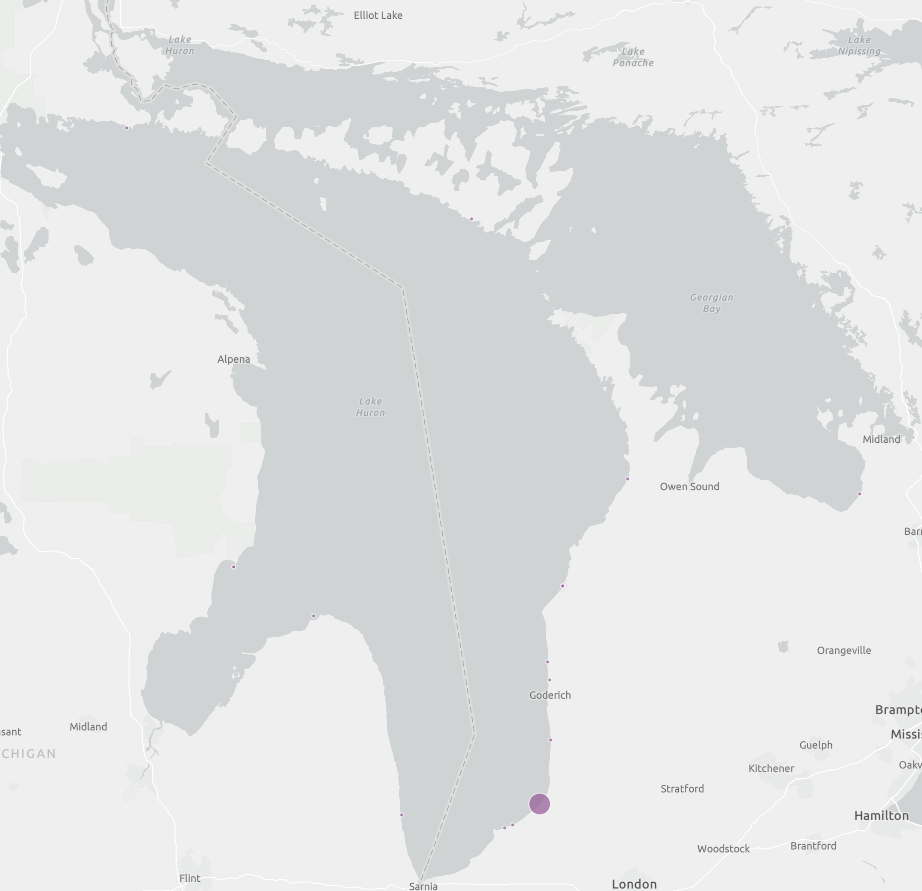
Lake Huron is one of the five Great Lakes of North America and is located on the border between Canada and the United States. The lake is the second largest of the Great Lakes by surface area and the fifth-largest freshwater lake in the world. The region has a long history of human habitation, with the Ojibwe people being the dominant Native American group in the area. The first European to explore the area was French explorer Étienne Brûlé in the early 17th century. The lake played an important role in the fur trade and was also used for transportation and shipping. During the 20th century, the lake’s economy shifted towards tourism and recreation, with the establishment of popular vacation destinations such as Mackinac Island. Today, Lake Huron is a popular destination for boating, fishing, and other recreational activities. The lake is also an important source of drinking water for millions of people and supports a diverse ecosystem with over 100 species of fish.
Lake Huron might not be the most popular lake, but it still can be dangerous. Let’s check out the numbers.
While Lake Huron has the lowest average incident rate, it is the only lake where fatalities outnumbered rescues, by almost 6. This means that there is some serious danger present in Lake Huron. Let’s take a closer look.
Again, the most dangerous type of current experienced at Lake Huron was the classic rip current, accounting for 8 fatalities and 4 rescues, meaning that the rip currents at Lake Huron are large, intense, and deadly. This means that extra caution is necessary when venturing into Lake Huron to swim, as a rip current could quickly turn a vacation into a tragedy.
| Lake | Sum of Rescues and Fatalities |
|---|---|
| Michigan | 485 |
| Erie | 82 |
| Superior | 58 |
| Ontario | 44 |
| Huron | 34 |
| Total | 703 |
Lake Michigan is the most dangerous lake of the 5 Great Lakes – by a wide margin. Accounting for almost 70% of the total incidents at the Great Lakes over the study period, Lake Michigan is by far the most dangerous lake. Coming in at a distant second, Lake Erie accounts for about 12% of the total incidents. This means that making sure you are aware of the risks and safety measures for rip currents at Lake Michigan, or any of the Great Lakes, is necessary to avoid tragedy.
Now that we know that Lake Michigan is the most dangerous lake, let’s see which beaches are the most dangerous.
| Beach | Lake | Sum of Rescues and Fatalities |
|---|---|---|
| Grand Haven State Park | Michigan | 20 |
| Holland State Park | Michigan | 18 |
| Washington Park Beach | Michigan | 13 |
| Park Point | Superior | 9 |
| South Haven Beach | Michigan | 9 |
| Pere Marquette Park | Michigan | 8 |
| New Buffalo Beach | Michigan | 7 |
| Nickle Plate Beach | Erie | 7 |
| Silver Beach | Michigan | 7 |
| Warren Dunes State Park | Michigan | 7 |
While not surprising, 8 of the 10 most dangerous beaches all lie along the shores of Lake Michigan. Grand Haven State Park is the most dangerous of all of the beaches in this study. Accounting for slightly over 6% of the total rescues and fatalities from the study period, Grand Haven State Park is by far the most dangerous beach in the Great Lakes region.
Boasting a strong tourist attraction from the historic lighthouse and a one-mile pier extending out into the lake built on a sandbar, this beach has a lot of potential for rip currents and structural hazards which means that swimming at this beach poses major risks for those who are not careful.
Holland State Park and Washington Park Beach come in second and third respectively, also along the shore of Lake Michigan.
Holland State Park is the most visited beach in the Great Lakes region, meaning that extra tourists mean increased risks for incidents at this beach. The break wall found on this beach which is a popular walk for visitors in the summer can become a hazard during more inclement weather, which adds to the risk of visiting Holland State Park.
The only two lakes that make the top 10 are Lake Superior, with Park Point coming in 4th, and Nickle Plate Beach on Lake Erie at 7th place. No matter which beach you visit, however, they all can pose serious threats to life and limb if not navigated properly. Do not forget that the Great Lakes experience the same kinds of events as the open ocean, which means that being a strong swimmer and noticing the signs of dangerous currents is paramount for safety.
To ensure a safe and enjoyable experience, swimmers and kayakers should familiarize themselves with the unique conditions of each lake, as well as local weather patterns and water temperatures, which can vary greatly throughout the year. While the lakes’ surface temperatures can reach a comfortable 70-80°F (21-27°C) during the summer months, they can plummet quickly, especially in deeper waters. Wearing a well-fitted life jacket, even for strong swimmers, is a crucial safety measure, as it provides both buoyancy and thermal protection in the event of an emergency.
Understanding and respecting the power of the Great Lakes’ currents is also vital. Rip currents, longshore currents, and structural currents can develop quickly and unexpectedly, posing significant risks to swimmers and kayakers alike. Staying vigilant and knowing how to react when caught in a current can be lifesaving. For instance, if caught in a rip current, it’s important to remain calm, conserve energy, and swim parallel to the shoreline until free from the current’s pull.
Moreover, kayakers should select appropriate equipment and clothing, including a well-maintained kayak with secure hatches, a spray skirt, a bilge pump, and a paddle float. Properly dressing for the water temperature, rather than the air temperature, is essential to avoid hypothermia. Investing in a drysuit or wetsuit, along with neoprene gloves and boots, can make a significant difference in comfort and safety.
Lastly, checking local marine forecasts, tide tables, and wave height predictions before heading out is crucial. It’s also wise to inform someone onshore of your intended route and expected return time. By following these safety guidelines, swimmers and kayakers can explore the awe-inspiring Great Lakes with confidence and create unforgettable memories in one of North America’s most spectacular natural playgrounds. If you are injured at the Great Lakes through no fault of your own, a Chicago personal injury attorney can help you get the compensation you deserve for your accident. In the incident there is a loss of life, contact a wrongful death attorney in Chicago immediately to get started on your case.
This data set was obtained from the National Weather Service and the Michigan Sea Grant, both parts of the United States. This means that data for Canada may be incomplete or inconclusive. We included the Canadian data in this study, but there may be missing data from the Canadian government that was not included in this report. The main focus of this study was the United States Great Lakes region, but due to cross-border travel and the close proximity, we decided to keep the Canadian data from the data set in the scope of this study.
https://www.fox9.com/news/series-of-errors-in-kayak-accident-that-killed-dad-3-kids-on-lake-superior
"*" indicates required fields